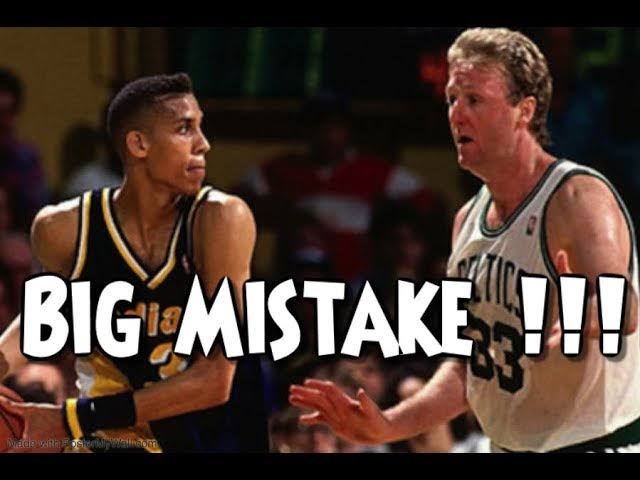Larry Bird, one of the most iconic figures in basketball history, is celebrated for his incredible skills, competitive spirit, and sharp wit. His trash-talking abilities were legendary, often getting under the skin of his opponents. However, provoking Larry Bird could sometimes backfire spectacularly, resulting in heightened tensions and memorable altercations. Delving into Bird’s past provides a deeper understanding of how his provocations shaped his career and the league.

Larry Bird’s trash-talking was an integral part of his game. He had an uncanny ability to psych out his opponents with his verbal jabs and psychological tactics. Bird’s confidence and swagger on the court often led to intense exchanges, as he backed up his words with stellar performances. His infamous declarations, such as telling opponents exactly how and where he would score, were not just mind games but accurate predictions that left many players frustrated and demoralized.
One of the most notable instances where Bird’s provocations led to significant consequences was the infamous fight with Julius Erving in 1984. During a heated game between the Boston Celtics and the Philadelphia 76ers, Bird’s relentless trash-talking and physical play pushed Erving to the brink. The altercation escalated quickly, resulting in both players being ejected and fined. This incident highlighted the risks of Bird’s provocations, showing that even the greatest players could be driven to physical confrontations.
Bird’s rivalry with Magic Johnson is one of the most storied in sports history. Their battles on the court were intense, and Bird’s provocations played a significant role in their dynamic. While their rivalry was rooted in mutual respect, the psychological warfare between them added an extra layer of competitiveness. Bird’s provocations sometimes fueled Magic to elevate his game, leading to some of the most memorable matchups in NBA history. This rivalry exemplified how Bird’s trash-talking could motivate opponents to reach new heights, sometimes to Bird’s detriment.
Bird’s trash-talking also had the potential to motivate his teammates and unify them against a common enemy. His sharp tongue and unwavering confidence inspired those around him to adopt a similar competitive edge. However, this approach could also lead to internal conflicts if teammates felt belittled or disrespected. Bird’s leadership style, while effective in many ways, had to balance the fine line between motivation and alienation.
In the 1985 NBA Finals, Bird’s provocations of the Los Angeles Lakers, particularly their center Kareem Abdul-Jabbar, added to the intensity of the series. Bird’s attempts to get under Kareem’s skin sometimes worked, but they also had the effect of galvanizing the Lakers. This series showcased how Bird’s provocations could have a double-edged impact, both rattling and rallying his opponents.

Off the court, Bird’s trash-talking legacy continued to shape his interactions and public persona. While many admired his competitive nature and quick wit, others viewed his provocations as unnecessary and unsportsmanlike. This dichotomy reflected the broader debate about the role of trash-talking in sports and its impact on player dynamics and public perception.
In conclusion, provoking Larry Bird could indeed go wrong in various ways. His trash-talking, while a key part of his game, sometimes escalated tensions to the point of physical confrontations, fueled rivalries, and motivated opponents to perform at their best. Bird’s ability to psych out his opponents was legendary, but it also came with risks that occasionally backfired. Delving into Bird’s past highlights the complexities of his competitive nature and the lasting impact of his provocations on the NBA and its players.



